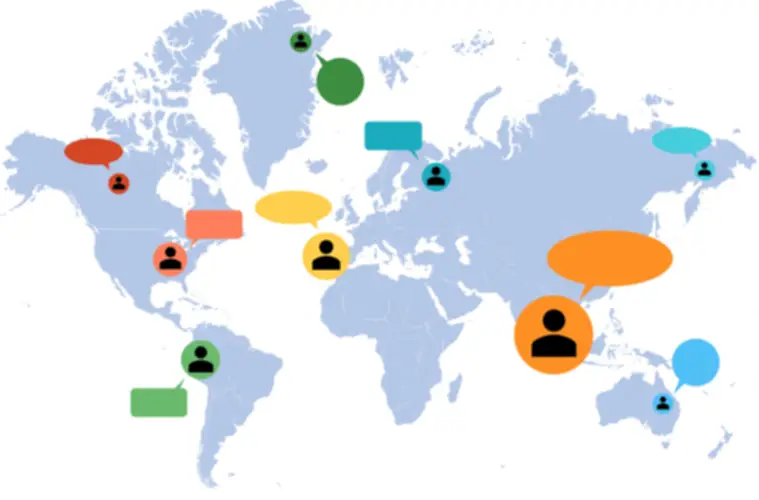Several measures must be taken to ensure accountable and effective implementation of AI in healthcare. In 1956, John McCarthy organized the Dartmouth Conference, where he coined the term “Artificial Intelligence.“ This occasion marked the beginning ai trust of the trendy AI era. We describe a non-exhaustive suite of AI purposes in healthcare within the close to term, medium term and longer term, for the potential capabilities of AI to reinforce, automate and transform medication. As AI continues to evolve and play a extra outstanding position in healthcare, the need for efficient regulation and use turns into extra crucial. That’s why Mayo Clinic is a member of Health AI Partnership, which is focused on serving to healthcare organizations evaluate and implement AI effectively, equitably and safely.
How Is Artificial Intelligence Used In Medicine?

AI can work with unstructured or structured data, extracting very important information and offering insights for decision-makers. It can also join methods like electronic health ai cases records (EHRs) with your other systems to maintain info relevant and error-free. However, accessibility and affordability aren’t the only points that patients consider AI can help remedy.
What Are The Advantages Of Utilizing Ai In Healthcare And Hospitals?
- A prior authorization model would need to work in near actual time, as a result of the required choices are sometimes time sensitive.
- Produce powerful AI options with user-friendly interfaces, workflows and entry to industry-standard APIs and SDKs.
- Coding is an exacting, expert-driven course of that extracts data from EHRs for claims submissions and danger adjustment.
- On the opposite, a novel dose optimization system—CURATE.AI—is an AI-derived platform for dynamically optimizing chemotherapy doses primarily based on particular person affected person information [55].
- Patients are evaluated in the ED with little data, and physicians incessantly must weigh probabilities when risk stratifying and making decisions.
- “I don’t believe there is a single health system, within the United States, that is capable of validating an AI algorithm that is put into place in a clinical care system.”
Data architects will be important in defining the way to record, store and construction clinical information in order that algorithms can ship insights, whereas leaders in knowledge governance and information ethics may also play important roles. In different data-rich areas, similar to genomics, new professionals would include ‘hybrid’ roles, similar to scientific bioinformaticians, specialists in genomic drugs, and genomic counsellors. Institutions will have to develop groups with expertise in partnering with, procuring, and implementing AI merchandise which have been developed or pioneered by different establishments.
How Is Ai Currently Being Used?
Most adults say they might use an intelligent virtual coach or an clever digital nurse to monitor health and signs at home. There is somewhat decrease enthusiasm for mental health help delivered via this methodology (Accenture, 2018). The projected advantages of utilizing AI in medical laboratories embrace however aren’t limited to, increased efficacy and precision. Automated methods in blood cultures, susceptibility testing, and molecular platforms have turn out to be standard in quite a few laboratories globally, contributing considerably to laboratory effectivity [21, 25].
Throughout The Realm Of Ai For Well Being, Who’s Strategic Approach Centers Round Three Pillars:
AI presents elevated accuracy, lowered costs, and time savings while minimizing human errors. It can revolutionize personalised drugs, optimize medication dosages, improve population well being management, set up pointers, present digital well being assistants, support mental health care, improve patient schooling, and affect patient-physician trust. Population well being management more and more makes use of predictive analytics to determine and information well being initiatives. In information analytics, predictive analytics is a self-discipline that considerably utilizes modeling, knowledge mining, AI, and ML. ML algorithms and different applied sciences are used to investigate information and develop predictive fashions to enhance patient outcomes and scale back prices. One area where predictive analytics can be instrumental is in identifying sufferers at danger of creating continual ailments corresponding to endocrine or cardiac illnesses.
Patient education is integral to healthcare, because it permits people to grasp their medical analysis, remedy options, and preventative measures [98]. Informed patients are extra doubtless to adhere to their remedy regimens and obtain higher health outcomes [99]. AI has the potential to play a major role in affected person education by providing personalized and interactive information and guidance to sufferers and their caregivers [100]. For instance, in patients with prostate most cancers, introducing a prostate most cancers communication assistant (PROSCA) chatbot offered a transparent to reasonable improve in participants’ information about prostate cancer [101].
There could additionally be 1000’s of hidden options in such fashions, which are uncovered by the faster processing of today’s graphics processing items and cloud architectures. Their combination appears to promise greater accuracy in diagnosis than the earlier generation of automated instruments for picture analysis, often identified as computer-aided detection or CAD. First, the generalizability of the findings could also be affected by the inherent variations in research methodologies, AI implementations, and health care settings across completely different areas. This heterogeneity introduces variability that would affect the applicability of the conclusions. To mitigate this limitation, rigorous search strategies have been used across multiple databases to include a diverse range of research.
This capability is particularly important for addressing widespread types of drug toxicity, similar to cardiotoxicity and hepatotoxicity, which frequently lead to post-market withdrawal of drugs. The simultaneous evaluation of extensive genomic data and other clinical parameters, such as drug efficacy or adverse results, facilitates the identification of novel therapeutic targets or the repurposing of existing medicine for new purposes [42–46]. Although rule-based systems included inside EHR systems are broadly used, including on the NHS,11 they lack the precision of more algorithmic systems based mostly on machine studying. These rule-based medical choice assist techniques are troublesome to maintain as medical data modifications and are often not capable of deal with the explosion of information and information based mostly on genomic, proteomic, metabolic and other ‘omic-based’ approaches to care. The complexity and rise of data in healthcare implies that synthetic intelligence (AI) will more and more be utilized throughout the field.

As mentioned beforehand, large national initiatives are now combining biobanks of genomic info with these phenotypes. For instance, eMerge frequently makes use of genomic analyses such as genome-wide association studies together with phenotyping algorithms to outline the gold-standard cohort or to study genetic risk elements within the phenotyped inhabitants (Gottesman et al., 2013; McCarty et al., 2011). To overcome this limitation, new analysis is investigating the appliance of hybrid approaches (known as semi-supervised) to create semi-automatically annotated training sets and using unsupervised methods to scale up EHR phenotyping. The large amounts of data in EHRs, if processed through deep neural networks, may soon permit the computation of phenotypes from a wider vector of features. The following sections describe a couple of areas that would profit from AI-supported tools built-in with EHR techniques, together with data management (e.g., medical documentation, information retrieval), user experience, and cognitive assist.
Furthermore, the emphasis on recent developments helps make sure that the evaluate reflects the most present developments and developments in AI applied sciences. In comparing the findings of this evaluation with existing literature, several key similarities and differences emerge. This evaluate aligns with Gazquez-Garcia et al [63] and Mooghali et al [64] in highlighting the essential role of well being care skilled training for effective AI integration.
As part of the surgical process, a surgeon would find the spot in the mind that’s triggering the seizures, ensure that spot isn’t important for his or her functioning after which safely remove it. As quickly because the brain scan is taken, the image is sent to a server the place the program, Viz.ai, analyzes it quick and efficiently using its neural community to arrive at a preliminary prognosis. An example of Cleveland Clinic’s dedication to AI innovation is the Discovery Accelerator, a 10-year strategic partnership between IBM and Cleveland Clinic, focused on accelerating biomedical discovery.
Using ML algorithms and other applied sciences, healthcare organizations can develop predictive models that determine patients in danger for persistent disease or readmission to the hospital [61–64]. The potential purposes of AI in assisting clinicians with therapy choices, notably in predicting remedy response, have gained recognition [49]. A research conducted by Huang et al. the place authors utilized patients’ gene expression data for coaching a help ML, successfully predicted the response to chemotherapy [51]. In this examine, the authors included 175 cancer sufferers incorporating their gene-expression profiles to predict the patients’ responses to various standard-of-care chemotherapies. Notably, the research showed encouraging outcomes, achieving a prediction accuracy of over 80% throughout multiple drugs. In one other examine performed by Sheu et al., the authors aimed to foretell the response to different courses of antidepressants utilizing electronic well being records (EHR) of 17,556 sufferers and AI [52].
Large Language Models (LLMs) are a sort of AI algorithm that makes use of deep studying methods and massively large information units to grasp, summarize, generate, and predict new text-based content material [1,2,3]. LLMs have been architected to generate text-based content material and possess broad applicability for varied NLP duties, together with text technology, translation, content summary, rewriting, classification, categorization, and sentiment evaluation. NLP is a subfield of AI that focuses on the interplay between computers and humans by way of natural language, together with understanding, decoding, and generating human language. NLP involves numerous methods similar to text mining, sentiment evaluation, speech recognition, and machine translation.
While medical gadgets like coronary heart displays can observe very important indicators, AI can collect the info from these gadgets and search for extra advanced conditions, such as sepsis. One IBM client has developed a predictive AI mannequin for untimely babies that’s 75% accurate in detecting severe sepsis. Because of them, we’re unlikely to see substantial change in healthcare employment because of AI over the next 20 years or so. There can be the likelihood that new jobs might be created to work with and to develop AI applied sciences. But static or growing human employment also mean, of course, that AI applied sciences are not likely to substantially reduce the prices of medical diagnosis and therapy over that timeframe. Another rising focus in healthcare is on successfully designing the ‘choice architecture’ to nudge affected person behaviour in a extra anticipatory method based mostly on real-world proof.
Transform Your Business With AI Software Development Solutions https://www.globalcloudteam.com/ — be successful, be the first!
